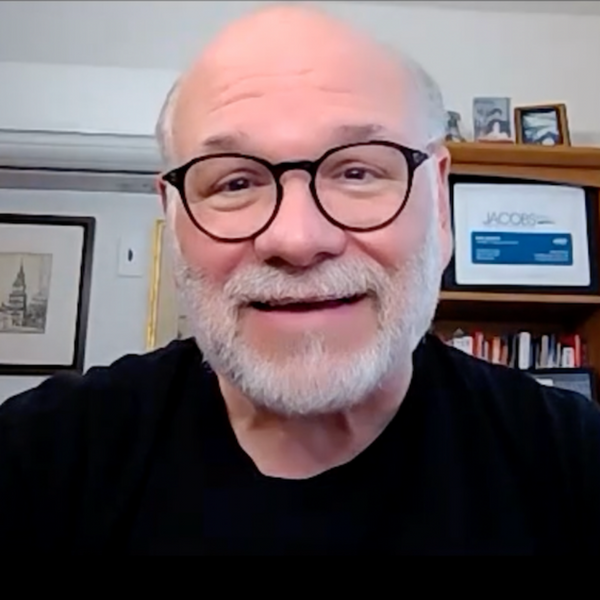7 Tips for Being a Better Leader
By Ken Jacobs
May 2020
Whether you lead in a corporate, nonprofit, government, academic or other environment, here are seven tips that I passionately believe will help you enhance your leadership skills:
1. Boost your emotional intelligence.
If you do just one thing in your effort to lead more effectively, try to increase your emotional intelligence. Every year, new studies indicate a connection between emotional intelligence and leadership success.
According to The Gottman Institute, which researches marriages and other relationships, emotional intelligence is “the ability to accurately perceive your own and others’ emotions; to understand the signals that emotions send about relationships; and to manage your own and others’ emotions.”
An article on the Harvard Business School website says that emotional intelligence accounts for nearly 90 percent of the qualities that set high performers apart from their peers who possess otherwise similar technical skills and knowledge.
2. Ask empowering questions.
Some leaders might think it’s their job to speak, declare, train and teach. But they would be better leaders if they learned to ask empowering questions. Questions stimulate your followers’ brains in ways that telling them something will not.
According to an article on FastCompany.com, by asking questions we trigger a reflex in others called “instinctive elaboration.” The question overtakes the listener’s thought process, focusing their brain on answering the question and preventing them from thinking about anything else.
When we ask questions, we light up the parts of the listeners’ brains that govern emotional connection, thereby increasing their engagement with us. Asking questions also encourages ideas and solutions to come from their brains and mouths, not from our own. And that’s the goal.
Leaders who are inclined to tell people what to do might want to adopt the mantra: “Don’t tell; ask.” Closed-ended questions can kill conversations, but open-ended questions empower people.
If a boss asks, “Would you like to brainstorm solutions to that issue?” the employee doesn’t have the option to answer, “No.”
3. Lead first and manage second.
Graduating from being a manager to becoming a leader is one of the most important steps we can take in our careers. This evolution can be transformational for our team members, our organizations and ourselves.
Managing and leading are related, but they’re two different skills. We manage things, such as processes, production schedules, budgets and timelines. But we lead people. And that’s why leadership can be a far more challenging and powerful endeavor than management.
Before jumping into any management changes we might wish to make — growing our businesses, increasing profitability, enhancing team performances, etc. — we should first ask ourselves some questions: Do our followers trust us completely? Would they follow us off the proverbial cliff? Do we inspire and empower them? Do we demonstrate courage?
If the answer to any of these questions is not a resounding “yes,” we likely need to improve our leadership skills before we try to tackle any management changes.
When our teams are loyal and engaged, we can make tremendous improvements, manage challenges and achieve just about anything — because they’ll want to help us reach those goals. It starts with leadership.
4. Redefine success.
As we move through our career trajectories, first we focus on being the best practitioners we can be. If we do well, we become managers. And then, if we’re successful at managing processes, production schedules and budgets, we might get promoted into positions of leadership. And that’s when everything changes.
Once we become leaders, we realize that the definition of success shifts from our own to that of the people we lead. Indiggo CEO Janeen Gelbart captured this idea perfectly when she said: “We believe that [the role] of a leader is to know what’s important and to help others get the important things done well.”
During your performance reviews, in addition to reporting on income and profitability, cite evidence of how you have supported your team members’ performance, professional development and career growth. Always be conscious of their success and how you have helped them achieve it. You only succeed when your team succeeds.
5. Expect superior performance, not perfection.
Leaders with perfectionist tendencies mistakenly believe they are motivating their teams to greater performance. In fact, leaders who demand perfection demand something that is impossible to achieve.
As leadership expert Mike Myatt has said, “Those of you who regard yourselves as perfectionists simply exhibit perfectionist tendencies in an unrealistic attempt to achieve what cannot be had.”
6. Don’t go it alone.
Leadership is rewarding, but it can also be challenging, frustrating and lonely. It also requires a lifetime of learning.
To constantly develop and keep yourself at the top of your game, read everything you can about leadership. One of my favorite books on the subject is “Energy Leadership: Transforming Your Workplace and Your Life from the Core,” by Bruce D. Schneider.
7. Remember that energy is reciprocal.
One definition of leadership is using your energy to achieve desired outcomes for your organization, team, peers, clients and yourself. The question isn’t, “Are you leading?” but rather, “How are you leading?”
When it comes to energy, we get what we give. Leaders who emit “woe is me” energy —suggesting they’re at the mercy of clients, prospects, competitors, the marketplace, etc. — will receive the same in return from their teams. Even worse, leaders who bring conflict energy to their workplaces — through arguments, disagreements and finding people to blame for problems — will get it back in droves.
Positivity and optimism are contagious, as are the beliefs that we can achieve anything we set our minds to, and that there are no challenges, only opportunities. We can all bring constructive energy to our organizations and thus become better leaders.
photo credit: pick-uppath



